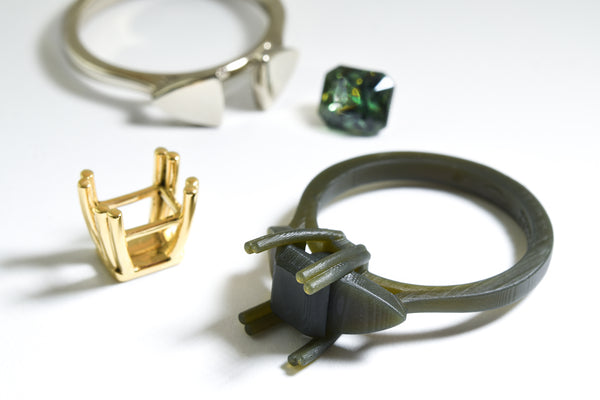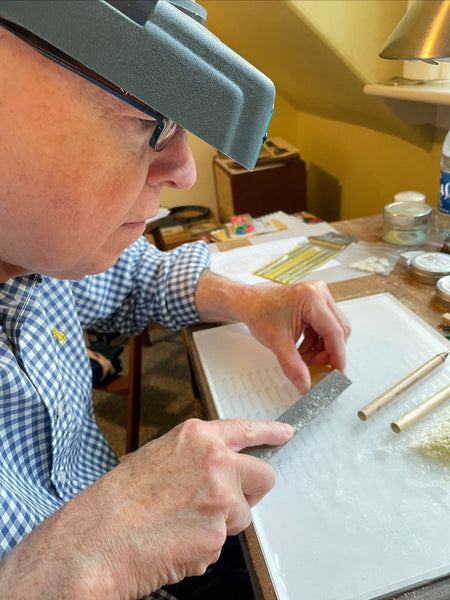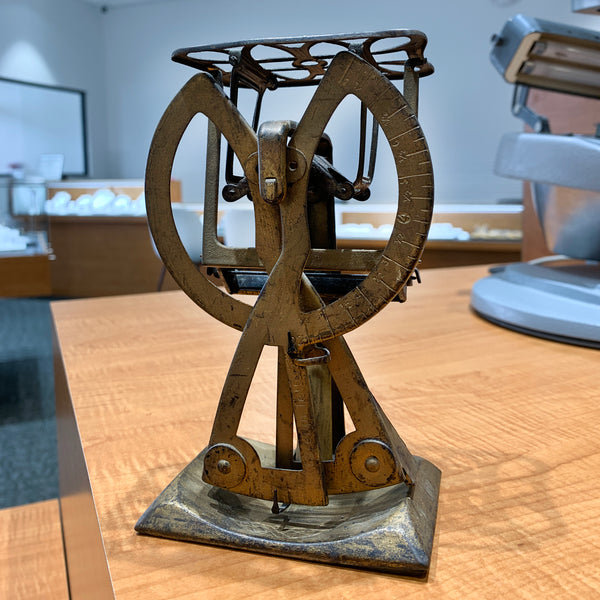Anatomy of an Engagement Ring

Have you ever wondered about the parts of your engagement ring? Of course, it’s more than just an exquisite diamond. Understanding the anatomy of an engagement ring will help you to enjoy it with confidence and arm you with knowledge regarding how to take care of it. If you’re choosing a ring for that special someone, understanding the essentials will help you make the ideal choice.
Parts of an Engagement Ring
The classic solitaire ring setting, also called a mounting, is typically used to set a single diamond and is the popular choice for an engagement ring. The mounting is typically made of two parts: the shank, which goes around the finger, and the head or crown, which secures the diamond. Using two separate parts has benefits that include quality control during the manufacturing process, and the ability to use the type and color of metal that you prefer.
If you want a mounting that will last a long time, choose platinum. While it is the most costly choice, this metal is pure white in color, very dense, and very durable. Platinum is the classic choice for a diamond solitaire ring and engagement ring styles.
If you want a white metal solitaire ring at a cost lower than platinum, choose 18-karat or 14-karat white gold. Pure gold is yellow in color. To create 18-karat and 14-karat white gold, alloys are mixed with the pure gold. Traditionally, nickel is used to change yellow gold to white. If you are allergic to nickel, consider white gold made with palladium.
White gold rings, regardless of their karat, are typically rhodium plated as a final step in the manufacturing process. Rhodium is one of the six platinum metals and is used to give white gold jewelry a crisp white color.
If you want a ring with a yellow or rose gold shank, choose to have it made of 18-karat or 14-karat gold. The head can be made of platinum for longer wear, or of 18-karat or 14-karat white gold.
Now let's consider how the shank and the head are made. Casting is a process that has been practiced for thousands of years. The casting process includes the making of a mold, and pouring molten metal into the void. Modern technology has dramatically improved the results of items made using this process.
Another method of making small jewelry components is called die-striking. In order to make a single piece, a series of dies are made. Small pieces of platinum or gold are forced into the recesses of the die with a great amount of pressure. This process compresses the molecules to create a very durable product. With care, well-made die-struck pieces of jewelry can be enjoyed for generations.
Engagement Ring Settings
There are seemingly endless design possibilities for engagement ring settings. The head can have four or six prongs and sometimes more, as well as having different designs. Shanks are available in many widths, heights, and contours.
When you are choosing your wedding band, take time to consider what metal and color you would like. You can match your wedding band to your solitaire engagement ring by having the same karat and color gold. Or, for a trendy “mismatched” look, you can switch metal colors. For example, you might try accenting your white gold engagement ring with a rose gold band.
If your engagement ring is platinum, you’ll want to choose a platinum band, or a contrasting color gold such as yellow or rose gold. White gold will have a subtly different hue than platinum, and will wear differently over time.
With all of the possible options for making a solitaire mounting, the best approach is to discuss your ideas and preferences with a specialist. Plante Jewelers is here to guide you every step of the way to take your relationship to the next level.
Our engagement ring designers in Swansea, Massachusetts can help you create an engagement ring that is purely unique and expresses your love.
Leave a comment
Comments will be approved before showing up.






Pierre Plante
Author